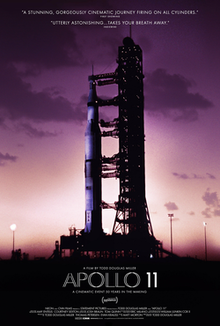Apollo 11 Transports and Unites
I recently saw Apollo 11 with my favorite eleven-year-old. As we heard Walter Cronkite describe the highly-anticipated moon launch, we saw crowds of people in sixties get-up. I was instantly transported to being eight.
After the adrenaline-inducing launch–which served as the first act climax– director/editor Todd Douglas Miller wisely decided not to return to the worldwide audience, glued to their television screens. Instead he focused solely on the treasure trove of never-before-seen archival footage and audio recordings.
This stylistic move reminded me of other documentaries that use primary materials to such a transporting effect, including Amy, Tupac: Resurrection, and Listen to Me Marlon. (The latter, a film about Marlon Brandon, uses hundreds of hours of audio recordings to tell his life story.)
Apollo 11 takes this aesthetic direction a step further with split screens that emphasize an evolutionary first: the communication between mission control and the module Columbia. The feeling of being there was astonishing. Film critic Matt Zoller Seitz called the effect a “vertigo-inducing sense of immediacy” that transports us beyond a “history lesson”.
He continues on RogerEbert.com, “A joyous music montage splits the image into ten panels, each showcasing groups of NASA employees, a mosaic conveying the group effort required to pull off this magic trick.”
And the mosaic of white male NASA employees was also extraordinary in a decidedly historical way. I would have many things to discuss with my 11-year-old companion, who is white and a minority at his San Francisco public school.
As the credits rolled, a middle-aged brown man to my left wept. “It’s amazing to recall a time when we all did something so great together,” he said.
So far, Apollo 11 is the top-grossing documentary for 2019 ($8,179,957 to date). Its theatrical success speaks to what I believe is a growing hunger for documentaries that remind us of common ground, shared purpose, united values.
Watch Apollo 11 for two reasons. As a filmmaker, notice and add to your repertoire Miller’s stylistic choices. And as a lover of documentaries, be uplifted by the transformative power of non-fiction cinema to unite.
